
Orthopedic in Hackensack NJ
DR. NEIL S. ROTH – Orthopedic in Hackensack, NJ
For the third consecutive year, New York Sports Medicine Institute founder Neil S. Roth, MD has been recognized by New York Magazine as one of New York’s Best Orthopedic in Hackensack, NJ. This prestigious list is determined by other doctors, and NYSMI takes pride in what is yet another acknowledgment of the high level of expertise that can be found at the New York Sports Medicine Institute.
New York Sports Medicine Institute – a comprehensive sports medicine practice providing orthopedic surgery, physical therapy, and concussion care – provides patients living or working in Westchester access to the region’s top sports medicine doctors and healthcare professionals in a single convenient White Plains location. Contact us to meet with the best Orthopedic in Hackensack NJ.
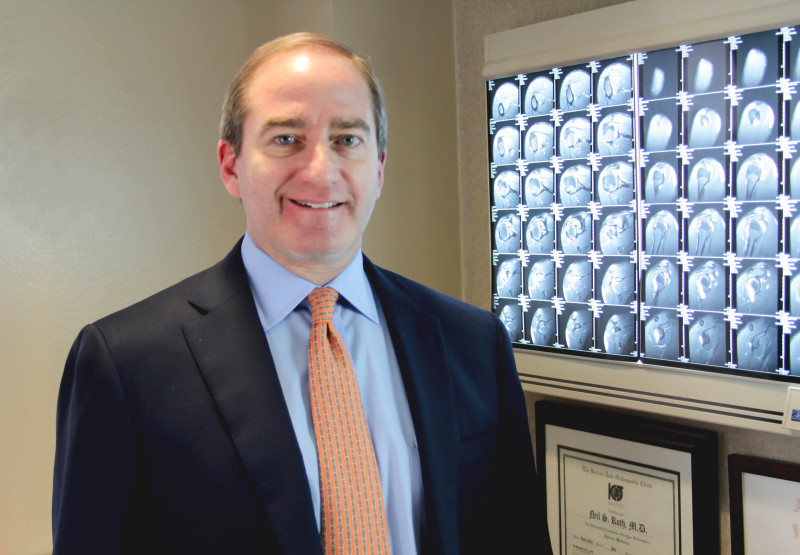
Dr. Roth is a board-certified orthopedic surgeon, specializing in sports medicine, shoulder, elbow and knee surgery. Dr. Roth completed his sports medicine fellowship training at the world-renowned Kerlan-Jobe Orthopedic Clinic in Los Angeles, and he served as an assistant team physician for the Los Angeles Lakers, Dodgers, Kings and Angels, the Anaheim Ducks and the University of Southern California. He has consulted on orthopedic issues with the New York Yankees and Oakland Athletics baseball clubs. Dr. Roth has been a member of the staff of the prestigious Lenox Hill orthopedic teaching hospital in New York City since 2003, and where he still practices. He is a highly skilled and experienced Orthopedic in Hackensack, NJ. Schedule your appointment today by filling out a form on our website.
DR. NICHOLAS DELANEY, MD – Orthopedic in Hackensack, NJ

Dr. Nicholas Delaney is a board-certified Orthopedic Surgeon concentrating on Sports Medicine and related injuries. A graduate of SUNY Upstate Medical School, Albany Medical Center for Residency and the prestigious Union Memorial Hospital Fellowship program in Baltimore Maryland, Dr. Delaney has built a reputation for providing excellent care to his patients in a compassionate, appropriate manner, putting the patient’s needs first.
Dr. Delaney’s current practice is focused on the treatment of athletic injuries, degenerative orthopedic conditions impacting mobility, and injuries sustained at the workplace (Worker’s Compensation) and Automobile accidents. He is completely focused on returning patients to normal movement using non-surgical, and when needed, surgical intervention. Dr. Delaney is licensed in New Jersey and New York and is board-certified with the ABOS.
Some examples of the kinds of injuries and conditions Dr. Delaney focuses on:
- Athletic injuries
- Muscle/Tendon tears
- Torn ligaments
- Torn meniscus
- Fractures
- Automotive Injuries
- Worker’s Compensation Injuries
Recent Blog Posts From Our Orthopedic in Hackensack, NJ
RECOVERY FOR SHOULDER IMPINGEMENT INJURIES
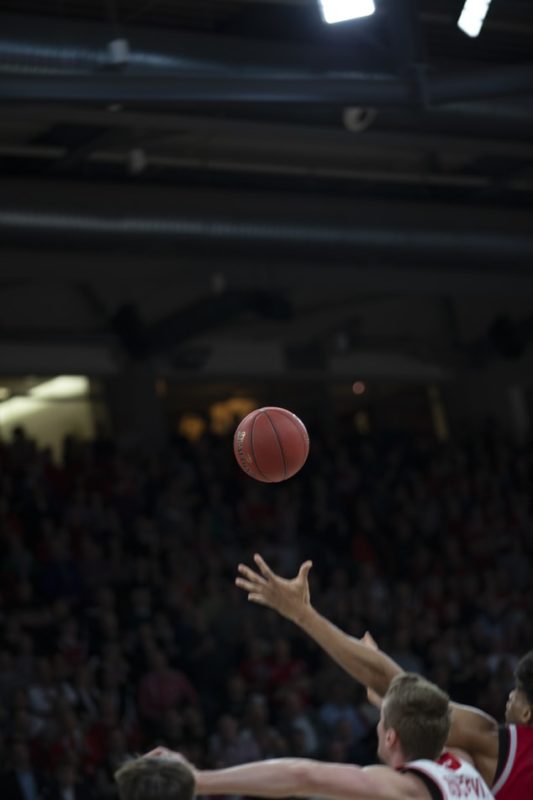
It is not uncommon that over the span of one’s life they may start seeing an orthopedic doctor for any issues they are having with their bones, ligaments and joints that need to receive medical treatment. New York Sports Medicine Institute has a highly trained and experienced Orthopedic in Hackensack, NJ that specialize in sports medicine.
Shoulder impingement injuries are more often linked to doing activities or sports that require repetitive motions such as swimming, baseball, football or even just doing the daily dishes over time, which causes joint damage. Most of the time the pain and discomfort can be fixed with physical therapy but if that does not help the injury then surgery is the next best option for the patient.
Our experienced Orthopedic in Hackensack, NJ specializes in several different areas of orthopedic care to help their patients. Our doctors work out of two offices, one located in New York City and the second one White Plains which is just north of New York City in Westchester County. Our team at NYSMI consists of Dr. Neil S. Roth and Physician’s Assistant Kelli A. Gallagher. Both physicians being board certified physicians and having over 30 years of experience combined.
These areas include the treatment of:
- Shoulder pain
- Knee pain
- Elbow pain
- Hip pain
- Foot & ankle pain
- Hand & wrist pain
- Radiology
- Injections for pain
TREATMENT OPTIONS FROM OUR Orthopedic in Hackensack, NJ
Here at New York Sports Medicine Institute, we choose to take a conservative approach to treat our patients having them attend physical therapy first and only choose to perform surgery if it is medically necessary. If surgery becomes the medical treatment that New York Sports Medicine Institute chooses to do surgery, it will be done using minimally invasive techniques when able. If a shoulder injury such as shoulder impingement goes untreated it can cause more pain and medical issues down the line, so it is important to contact New York Sports Medicine Institute as soon as symptoms develop.
If surgery is the treatment plan New York Sports Medicine Institute chooses to pursue, patients will be required to attend physical therapy after as well for normally 8-12 weeks meeting 2-3 times per week with their physical therapist to work on strengthening and the healing process. According to Healthline, a full recovery process can take 3 to 6 months. However, it varies from patient to patient to determine in a few weeks after injury how long it will take for them to resume normal activities.
CONTACT OUR Orthopedic in Hackensack, NJ TODAY
If you’re someone who is experiencing shoulder pain like described above we urge you to contact New York Sports Medicine Institute and our Orthopedic in Hackensack, NJ, Dr. Neil Roth for treatment. Feel free to set up an appointment on our website today! We look forward to working with you.
TREATMENT METHODS FOR PATELLAR TENDONITIS
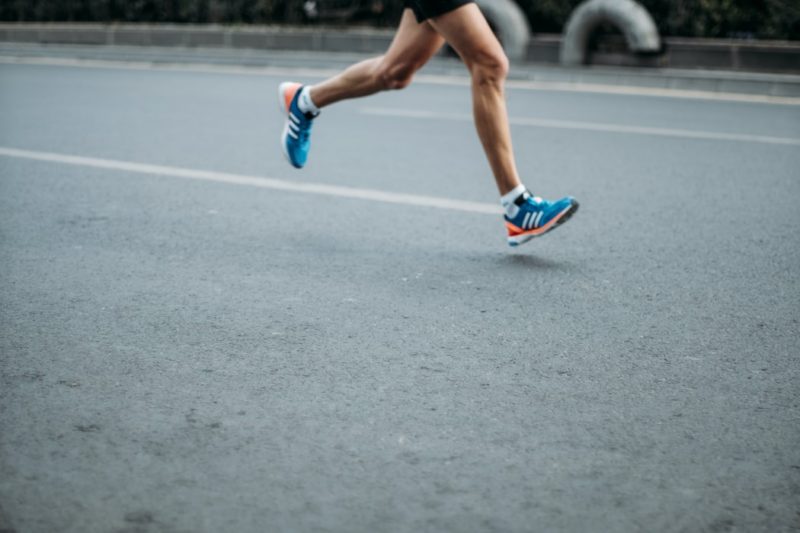
HOW CAN OUR Orthopedic in Hackensack, NJ HELP YOU?
At New York Sports Medicine Institute, our team knows how devastating knee pain and injuries can be to an athlete. If you’ve recently been diagnosed with patellar tendonitis, you’ll need to work with a top team that can help with your rehabilitation and get you back to full strength. Dr. Roth, our Orthopedic in Hackensack, NJ, will be able to do just that. For more information on what can go into your treatment, and what can point to you having sustained this injury, continue reading.
WHAT IS PATELLAR TENDONITIS?
Your patellar tendon works to connect the muscles in the front of your thigh to your kneecap. These parts of the body work together to allow for movements such as kicking, running or jumping. When overuse of your knee causes your patellar tendon to become irritated and inflamed, it is known as patellar tendonitis. Many different actions can lead to irritation in this tendon taking place, but the sports that are most likely to cause this include:
- Basketball
- Volleyball
- Track and field events that involve jumping
SYMPTOMS TO WATCH FOR
Patellar tendonitis, also known as “jumper’s knee,” needs to be taken care of right away to prevent serious damage to your knee. When care is not received quickly, surgery could be the only option to treat the issue at hand. That is why when we begin to experience any of the following symptoms, you should reach out to our Orthopedic in Hackensack, NJ, right away:
- Pain and inflammation around your knee
- Redness or swelling
- Feelings of discomfort that begins with physical activity or right after an intense workout
- Inability to compete due to knee pain
RISK FACTORS
Knowing the risk factors that can lead to patellar tendonitis can help you try to avoid this type of injury in the future. Not needing to visit with our doctor of Orthopedic in Hackensack, NJ, means you won’t need to stop competing. Below are just some of the risk factors our team wants you to be aware of:
- Muscular imbalances
- Tightened leg muscles
- Sudden increases in the amount of stress placed on your knees
INVASIVE FORMS OF TREATMENT
After being diagnosed with patellar tendonitis, there are multiple treatment options our Orthopedic in Hackensack, NJ, may recommend. When the damage to your patellar tendon is severe enough, invasive intervention is sometimes the only option. Should this happen to you, below are few procedures and treatments that may be performed:
- Platelet-rich plasma injections: Dr. Roth will perform this injection for patients plagued with chronic patellar tendon problems. These injections can promote new tissue to form and help repair damage.
- Oscillating needle procedure: This outpatient procedure is a relatively new one. With the use of local anesthesia and ultrasound imaging, a small, oscillating needle will cut away the damage in your knee while sparing the tendon.
- Other Surgery: The previous procedure is not the only one that can be performed. If the damage is severe enough, Dr. Roth may recommend a surgical debridement of the patellar tendon. Doing so can eliminate your pain and get you back to full strength.
NON-INVASIVE TREATMENT
While invasive treatments can be effective, they always carry the risk of complications. To avoid this from happening, our team may utilize non-invasive forms of treatment at first to see if they will be effective. Examples of these forms of treatment include:
- Physical therapy: Physical therapy is an activity-based form of treatment that focuses on promoting healing from within the affected area. Through the use of therapeutic stretches and strengthening exercises, the irritation being experienced in your patellar tendon can be relieved.
- Knee braces: If instability has caused patellar tendonitis to take place, wearing a knee brace could correct the issue. These braces can offer the support you need and take the pressure of the patellar tendon.
- Rest and medication: Sometimes, all you’ll need is a few days worth of rest to correct your patellar tendonitis. To manage your pain during your resting period, you may be prescribed painkillers or anti-inflammatories.
CONTACT OUR Orthopedic in Hackensack, NJ
Trying to live with knee pain can quickly prove to be a detriment to your everyday life. At New York Sports Medicine Institute, our team is committed to helping our patients find the relief they need. For more information on patellar tendonitis, and the treatment methods from our Orthopedic in Hackensack, NJ, contact us today.
WHAT CAUSES EXCRUCIATING HIP PAIN?
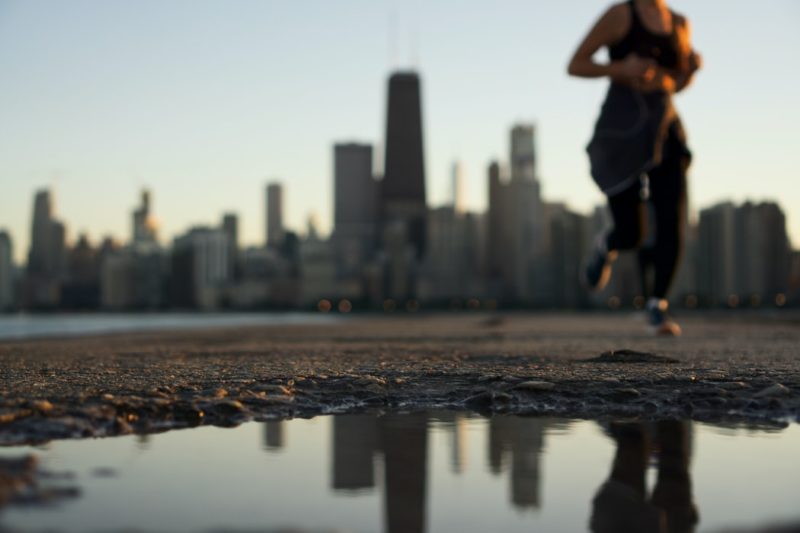
NYSMI – Orthopedic in Hackensack, NJ
Have you ever found yourself with excruciating hip pain? If yes, then the doctors of Orthopedic in Hackensack, NJ will suggest going to NYSMI to help you get the best treatment for your pain. At NYSMI we are dedicated to getting you back on your feet and back to the things that you love the most. We understand that being in pain is not an option for you and we want to make sure that is the case. Our team is always ready to help our clients in any way possible.
WHAT CAUSES HIP PAIN?
When it comes to hip pain there can be several different reasons why we might develop excruciating pain in our hips. For anyone who has ever had hip pain, they can tell you that it is nothing to mess around with. Hip pain can come from several different kinds of things. One of the most common reasons for hip pain is injuries that have happened in the past. Other causes of hip pain include:
- Inflamed tendons
- Any kind of Arthritis
- Trochanteric bursitis
- Hip fractures
- Pinched nerve
WHAT ARE THE SYMPTOMS?
When it comes to the symptoms of hip pain there are several different ways to tell what kind of him pain you have besides the obvious one of being in pain. If you were to get up from a chair or just simply walking and you have a snapping sound or feeling in your hip this could be another symptom of hip pain. You might not have pain originally but it could mean that you might have pain later on down the road. This kind of sound usually comes from athletes or dancers. If you are having pain with the snapping it is usually a sign of cartilage tear or fragments of material in the hip. Other causes of hip pain include pain in the:
- Thigh
- Inside of the hip joint
- Buttocks
- Outside the hip joint
- Groin
TREATMENTS
For anyone who has experienced hip pain, they will pretty much do anything to get relief for it. Good thing is that there is a way to relieve pain but you just have to be willing to put in the work to help get relief. Depending on what the cause of the pain is you might be able to just get some over the counter medicine that will temporally relieve the pain but it is not the solution. If you seek medical advice from our doctors of Orthopedic in Hackensack, NJ they might suggest going to a physical therapist. If the pain is from exercising then the doctor or physical therapist might suggest taking a break for a couple of days to see if the pain subsided. Usually, this is the case from pain is from exercising.
WHAT CAN A PHYSICAL THERAPIST DO FOR HIP PAIN?
A physical therapist is highly trained and a licensed professional in a wide variety of areas of the body to help people who are suffering from acute and chronic pain. Their goal is to decrease your pain while also increasing your mobility. If you are suffering from walking, going up and down stairs, sitting in a chair, or running a physical therapist can help with those problems. If a doctor recommends you to see a physical therapist the therapist will asses several different things to see where your strength, range of motion, and balance is. This will help the therapist create a program that is best suited for you due to your pain. If you do happen to need surgery going to physical therapy will still be a great option because they will make sure that you are ready for the surgery. They help by building up the muscles around the joint so that after the surgery you have muscle there to help you do some of the beginning exercises. If you are looking to get relief for your pain going to a physical therapist is a good place to start.
CONTACT US FOR Orthopedic in Hackensack, NJ
If you are someone you know is looking for an Orthopedic in Hackensack, NJ and they are looking for relief from their hip pain then tell them to check us out. Our team wants to help you in any way that we can. We understand that that hip pain something that no one should have to suffer through and that is why we want to assist you. Please visit our website to schedule an appointment. We look forward to hearing from you.
WHAT IS TENNIS ELBOW?

Did you know that tennis elbow is a form of tendonitis? Also known as lateral epicondylitis, this particular type of tendonitis causes swelling and pain in the elbow and arm region. This painful inflammation is caused by overusing the elbow and arm muscles to perform repetitive movements. Hence, why it’s called tennis elbow. When it comes to elbow pain, this condition is considered one of the most common reasons why people visit a doctor. It can occur at any age and tends to become more severe over time. If you or someone you know has been suffering from tennis elbow and are in need of an Orthopedic in Hackensack, NJ for treatment, contact our staff at New York Sports Medicine Institute. We offer a wide variety of physical therapy treatments that can help target the muscles of the elbow and reverse the signs of your injury. Continue reading to learn more about tennis elbow and how physical therapy can help reduce pain and treat your symptoms.
WHAT CAUSES TENNIS ELBOW?
Tennis elbow involves the swelling and inflammation of the extensor carpi radialis brevis (ECRB) muscle which is located in the forearm. This muscle helps to extend and raise the wrist. Repetitive motions of the ECRB muscle can cause microscopic tears to occur, resulting in pain, inflammation, and weakening of this muscle over time.
Tennis elbow can be brought on by any activity that requires repetitive movements. These activities can include sports, hobbies, or even certain jobs, such as:
- Tennis.
- Racquetball.
- Squash.
- Fencing.
- Weight lifting.
- Swimming.
- Golfing.
- Typing on a computer.
- Painting.
- Raking.
- Knitting.
- Carpentry.
WHAT ARE THE SYMPTOMS?
Tennis elbow can bring on a variety of different symptoms. These can include:
- Inflammation of the forearm.
- Pain that extends from the outside of the elbow, radiating down towards the forearm and wrist.
- Weakened grip or decreased ability to make a fist.
- Increased level of pain when shaking, squeezing or conducting normal activities with the hand or wrist.
This condition is very similar to another medical injury called golfers elbow. Both of these conditions affect the outside of the tendon in the forearm. It’s important that if your pain continues to get worse, you seek medical attention immediately. If the pain persists, it could be a warning sign that your condition is worsening.
DIAGNOSIS OF TENNIS ELBOW
In order for your doctor to definitively diagnose your tennis elbow condition, a thorough medical examination must be completed. Your doctor may ask you for a rundown of your medical history and an overview of the daily activities you perform. They can also use imaging testing such as X-rays or an MRI (Magnetic Resonance Imaging) to pinpoint any microtears present in the tendons. These tests can help your doctor rule out any other conditions that could be present and also be the source of your pain.
HOW CAN Our Orthopedic in Hackensack, NJ HELP?
It’s said that nearly 80-95 percent of those suffering from tennis elbow can recover using non-surgical treatment methods. Physical therapy is one of the most prominent ways used to reduce pain and also help improve overall strength and range of motion in the forearm, hand, and wrist. This particular injury can impair your strength and ability to conduct everyday activities, making physical therapy essential to incorporate into your recovery process. Physical therapists can help provide you with daily exercises such as:
- Fist clenches.
- Wrist extensions.
- Wrist flexion.
- Towel twists.
- Supination using dumbells.
Another key way to ensure recovery from tennis elbow is to incorporate more regular rest into your routine. Without allowing your body time to properly rest, you can be sure your condition will be sustained or get worse.
PREVENTION OF TENNIS ELBOW
Prevention of this injury is all about taking the proper precautions and being mindful of your predisposed risk for tennis elbow. Athletes who perform repetitive motions with the wrist or hand should take into account their susceptibility for this condition and try to limit overusing these muscles in a short period of time. By taking breaks, making sure you’re using the proper equipment, and icing your elbow frequently, it can help ensure the prevention and recurrence of this particular injury.
CONTACT Our Orthopedic in Hackensack, NJ
If you are experiencing the signs and symptoms of tennis elbow and are in need of a proper diagnosis and treatment plan, schedule an appointment with our team at New York Sports Medicine Institute. Our staff of well experienced orthopedic surgeons/sports medicine doctors and skilled physical therapists can help to provide you with the proper diagnosis and treatment plans for you and your condition. Our Orthopedic in Hackensack, NJ can help treat and reverse the signs of your tennis elbow. So don’t wait, contact us today and get the relief you need!
AVOIDING WEAR AND TEAR ON THE KNEE
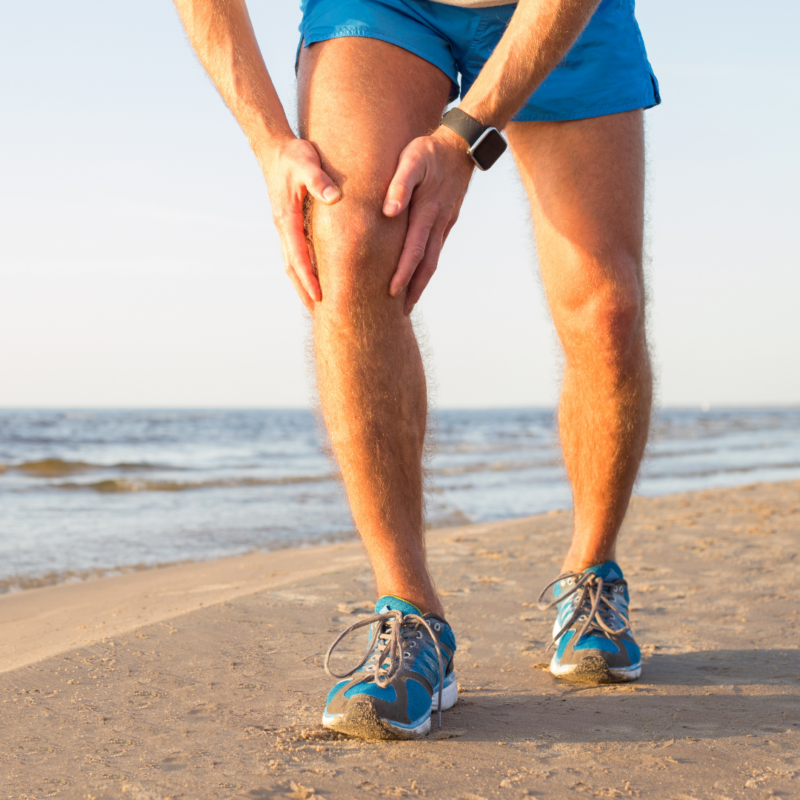
In need of a Orthopedic in Hackensack, NJ for your pain and discomfort? Dr. Neil Roth and the team at NYSMI can assist you. Contact one of our three offices today to learn more.
What is the Knee Joint?
As the largest joint in the body, the knee is the most commonly injured joint, especially among athletes and active individuals. In addition to being the largest joint of the body, it is also the most complex, made up of a series of bones, ligaments, cartilage, and more, which allow the joint to serve many purposes and sustain heavy activity.
However, despite this, the knee is extremely susceptible to wear and tear. If you are an athlete, gym frequenter, or are just experiencing knee pain from daily life, our Orthopedic in Hackensack, NJ at NYSMI is here to give you advice on avoiding wear and tear on the knee, and to tell you about some of the knee pain treatment options available to you.
What Causes Knee Injuries and “Wear and Tear” on the Knee Joint?
Usually, the cause of knee pain and injuries is dependent on the type of physical activity and the lifestyle of the individual. For non-athletes, the following can cause knee pain and wear and tear on the joint:
- Frequent stair climbing
- Frequent jumping
- Arthritis
- Repetitive motions
- Awkward planting of the foot when walking/running/climbing
- Lack of muscle flexibility or strength
- Excessive weight and pressure on the knee, from being overweight or obese
However, for athletes and those with highly active lifestyles, wear and tear on the knee can lead to knee injuries. It is important to know what type of knee injury you might have to better prevent wear and tear in the future. Our Orthopedic in Hackensack, NJ at NYSMI found that the most common of these are:
- ACL Injury: usually caused by a change in speed or awkward landing or pivot
- MCL Injury: usually caused by collision on the side of the knee
- PCL Injury: usually caused by collision to a bent knee or twisting of the joint
- Meniscus Tear: usually caused by pivoting, twisting, being tackled, abrupt speed change
- OCD of the Knee: a condition that develops in athletes after another knee injury
- Articular Cartilage Injury: damaged cartilage in the knee, or “wear and tear,” requires treatment and prevention methods against further injury
How Can I Avoid and Prevent “Wear and Tear” and Other Knee Injuries?
For athletes, active individuals, and all others, our Orthopedic in Hackensack, NJ at NYSMI recommends a variety of measures to prevent knee wear and tear over time. These include:
- Don’t decrease your exercise: Even if you’re experiencing knee pain, it is important to continue exercising regularly. This is so that the muscles of the knee do not weaken or deteriorate. One of the most important aspects of maintaining knee health is to strengthen and increase flexibility in the muscles of the knee. In addition, maintaining a good exercise routine will help keep your weight at a normal level for your height, age, and gender, which reduces stress on the knee and increases mobility.
- Ensure that your footwear is high quality and fits well: Wearing proper footwear, in physical activity and everyday life, is essential in preventing knee injuries and long term wear and tear. Proper footwear allows for ideal hip-leg-knee-ankle alignment, and increases your balance. While improper footwear may not feel as if it increases knee pain at the time, its effects can be long term and highly damaging.
- Warm up before exercise: Flexibility is a key factor in preventing knee pain and injuries. Thigh stretches are especially important in decreasing pressure and tension on the knees. This can also help prevent long term wear and tear as the knee increases in flexibility and range of motion.
- Engage in low-impact exercise: For athletes and those with active lifestyles, opting for low impact exercise is important in maintaining knee strength. Activities that include jumping, collisions, and quick changes in speed can wear and tear at the knee joint over time. While it is important to maintain an exercise program, consider changing your routine to low impact activities, such as walking, swimming, using an elliptical instead of a treadmill, and other practices that reduce impact on the knees.
Orthopedic in Hackensack, NJ
If you are already experiencing knee pain from wear and tear or a related injury, our team at NYSMI is here to help. Our treatment options for knee pain vary based on each individual case, but mainly include:
- Physical Therapy (for most types of chronic knee pain or wear and tear)
- Minimally Invasive Arthroscopic ACL and PCL Reconstruction Surgery
- Partial Knee Replacement (usually for ACL and PCL injuries, as well as osteoarthritis)
- Full Knee Replacement (usually for osteoarthritis)
Contact us today to schedule an appointment, and find out more about how to treat current knee pain, and prevent future wear and tear. Our Orthopedic in Hackensack, NJ at NYSMI is always ready and able to help!
COPING WITH PATELLAR TENDONITIS

What Can An Orthopedic in Hackensack, NJ Do For You?
Basketball players who jump high to shoot or volleyball players that are constantly in the air to spike, pain in the kneecaps are common and can occur. If you are experiencing pain below your knee caps, you may be experiencing Patellar Tendonitis. This condition can prohibit you from performing your best, potentially have you on the sidelines, or worst, land you on the surgical bed if you don’t take proper actions when pain arises. Thankfully, here at NYSMI, our Orthopedic in Hackensack, NJ is well trained and equipped to assess the issue and develop a customized treatment plan specifically for you. Learn more about Patellar Tendonitis below and how you can cope with it before your next appointment with us.
What is Patellar Tendonitis?
Patellar tendonitis is the overuse, inflammation, or injury of the patellar tendon, the tissue that connects the kneecaps to your shin bone. The tendon works with your muscles in your thighs by allowing you to extend your knee so you can kick, run, jump, and bend. Also known as “jumper’s knee” because it is commonly experienced by athletes who participate in physical activity or sports that require frequent jumping, such as basketball or volleyball. However, anyone can develop patellar tendonitis. Causes include:
- Repeated stress such as running and jumping for prolong periods.
- Tight leg muscles and hamstrings that can put pressure on the knees.
- Muscular imbalances.
- Chronic illnesses such as kidney failures, autoimmune diseases, or diabetes that can disrupt blood flow to the knees and weaken the tendon.
Symptoms
The most common symptom of patellar tendonitis is pain or swelling below the knee caps. Initially, you can experience pain at the beginning or end of your workout routine. Over-time, if pain worsens, it can interfere with physical activity and day to day movements such as walking, kneeling, rising from a chair, or climbing stairs. Other symptoms include:
- Pain and tenderness below or around the kneecaps.
- Weakness in the knees during physical activities.
- Pain when straightening or bending the legs.
- Pain when running and jumping.
Prevention
Taking precautionary steps is crucial before the problem persists. If you are seeking treatment, our Orthopedic in Hackensack, NJ can evaluate the issue and take the appropriate course of action to solve the issue. In the meantime, by following these few tips, you can prevent Patellar Tendonitis from stopping you from playing your favorite sports. This condition affects the knees so it is important to always:
- Pay attention- if you are experiencing pain, don’t ignore it. Take a break and avoid any physical activity until the pain goes away.
- Workout the muscles- Perform exercise routines that involve lowering your leg slowly and extending your knees. Exercise routines include squats, leg press, and lunges.
- Perfect Your Technique- Before performing any routine or equipment you are unfamiliar with, consider getting professional help on how to properly execute them. Performing proper techniques can help you with good form and prevent injuries from happening.
- Stretch- Make sure to always stretch either before or after your workout. Stretching allows for better mobility in the knees and prevents injuries from occurring.
How to Cope with Patellar Tendonitis
If you are experiencing Patellar Tendonitis, it’s important to follow these tips before you come to your next appointment with us. Patellar Tendonitis can be treated with these at-home remedies and tips that you can do yourself:
- Rest the affected area.
- Apply the ice to the area.
- Our Orthopedic in Hackensack, NJ may suggest wearing a knee brace for a few weeks.
- Take over the counter anti-inflammatory medication such as ibuprofen.
- Stretch and perform gentle exercises to prevent stiffness in the knees.
It is important to allow the tendon to heal when you are experiencing pain. If the tears in the tendons continue to multiply, the issue can worsen and potentially require surgery.
What Can Our Orthopedic in Hackensack, NJ Do for You?
Don’t let Patellar Tendonitis be a problem in your day to day life. If pain continues for more than a few weeks, it is time to book your appointment with us at NYSMI. Our highly-trained Orthopedic in Hackensack, NJ knows the importance of a full recovery. Our team will evaluate the issue and develop a treatment plan that will get you back on your feet and back on the playing field. To learn more about how we can help you with Patellar Tendonitis, contact us today and start your road back to the competition.
AVOIDING WEAR AND TEAR ON THE KNEE

In need of a Orthopedic in Hackensack, NJ for your pain and discomfort? Dr. Neil Roth and the team at NYSMI can assist you. Contact one of our three offices today to learn more.
What is the Knee Joint?
As the largest joint in the body, the knee is the most commonly injured joint, especially among athletes and active individuals. In addition to being the largest joint of the body, it is also the most complex, made up of a series of bones, ligaments, cartilage, and more, which allow the joint to serve many purposes and sustain heavy activity.
However, despite this, the knee is extremely susceptible to wear and tear. If you are an athlete, gym frequenter, or are just experiencing knee pain from daily life, our Orthopedic in Hackensack, NJ at NYSMI is here to give you advice on avoiding wear and tear on the knee, and to tell you about some of the knee pain treatment options available to you.
What Causes Knee Injuries and “Wear and Tear” on the Knee Joint?
Usually, the cause of knee pain and injuries is dependent on the type of physical activity and the lifestyle of the individual. For non-athletes, the following can cause knee pain and wear and tear on the joint:
- Frequent stair climbing
- Frequent jumping
- Arthritis
- Repetitive motions
- Awkward planting of the foot when walking/running/climbing
- Lack of muscle flexibility or strength
- Excessive weight and pressure on the knee, from being overweight or obese
However, for athletes and those with highly active lifestyles, wear and tear on the knee can lead to knee injuries. It is important to know what type of knee injury you might have to better prevent wear and tear in the future. Our Orthopedic in Hackensack, NJ at NYSMI found that the most common of these are:
- ACL Injury: usually caused by a change in speed or awkward landing or pivot
- MCL Injury: usually caused by collision on the side of the knee
- PCL Injury: usually caused by collision to a bent knee or twisting of the joint
- Meniscus Tear: usually caused by pivoting, twisting, being tackled, abrupt speed change
- OCD of the Knee: a condition that develops in athletes after another knee injury
- Articular Cartilage Injury: damaged cartilage in the knee, or “wear and tear,” requires treatment and prevention methods against further injury
How Can I Avoid and Prevent “Wear and Tear” and Other Knee Injuries?
For athletes, active individuals, and all others, our Orthopedic in Hackensack, NJ at NYSMI recommends a variety of measures to prevent knee wear and tear over time. These include:
- Don’t decrease your exercise: Even if you’re experiencing knee pain, it is important to continue exercising regularly. This is so that the muscles of the knee do not weaken or deteriorate. One of the most important aspects of maintaining knee health is to strengthen and increase flexibility in the muscles of the knee. In addition, maintaining a good exercise routine will help keep your weight at a normal level for your height, age, and gender, which reduces stress on the knee and increases mobility.
- Ensure that your footwear is high quality and fits well: Wearing proper footwear, in physical activity and everyday life, is essential in preventing knee injuries and long term wear and tear. Proper footwear allows for ideal hip-leg-knee-ankle alignment, and increases your balance. While improper footwear may not feel as if it increases knee pain at the time, its effects can be long term and highly damaging.
- Warm up before exercise: Flexibility is a key factor in preventing knee pain and injuries. Thigh stretches are especially important in decreasing pressure and tension on the knees. This can also help prevent long term wear and tear as the knee increases in flexibility and range of motion.
- Engage in low-impact exercise: For athletes and those with active lifestyles, opting for low impact exercise is important in maintaining knee strength. Activities that include jumping, collisions, and quick changes in speed can wear and tear at the knee joint over time. While it is important to maintain an exercise program, consider changing your routine to low impact activities, such as walking, swimming, using an elliptical instead of a treadmill, and other practices that reduce impact on the knees.
Orthopedic in Hackensack, NJ
If you are already experiencing knee pain from wear and tear or a related injury, our team at NYSMI is here to help. Our treatment options for knee pain vary based on each individual case, but mainly include:
- Physical Therapy (for most types of chronic knee pain or wear and tear)
- Minimally Invasive Arthroscopic ACL and PCL Reconstruction Surgery
- Partial Knee Replacement (usually for ACL and PCL injuries, as well as osteoarthritis)
- Full Knee Replacement (usually for osteoarthritis)
Contact us today to schedule an appointment, and find out more about how to treat current knee pain, and prevent future wear and tear. Our Orthopedic in Hackensack, NJ at NYSMI is always ready and able to help!
Directions From Hackensack NJ, To Our Paramus Location!
Directions From Hackensack NJ, To Our Union Location!
Directions From Hackensack NJ, To Our West New York Location!
For more information about Dr. Nicholas Delaney or to learn more about our practice, fill out the contact form below!
